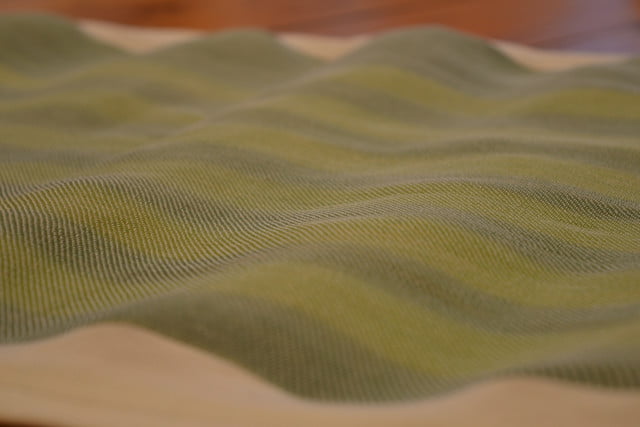Revolutionary threads could disrupt one of the world’s oldest industries and keep nearly 50,000 jobs in the U.S. over the next ten years. They will be able to monitor vital signs, convert light to electricity, and “cloak” soldiers on the battlefield.

Smart Fabrics. Shirts that can monitor blood pressure, jackets that can store and convert thermal energy, window shades and tents that harvest solar energy, dresses that change color at the push of a button, and self-drying shoes are part of a new photonics initiative with both military and commercial applications. This new technology can be used as threads woven into textiles which could conceivably conduct electricity, sense the temperature and body functions, communicate with the internet, and detect threats and report injuries to soldiers on the battlefield.
A University of Central Florida scientist is playing a critical role in shaping a $317 million U.S. Department of Defense program that could expand the function of clothing to include monitoring our health, sensing the environment, and harvesting energy.
The process of creating a fiber capable of functioning as a fully integrated and networked system will essentially meld together a diversity of materials not usually associated with optical fibers, such as metals and semiconductor materials, along with the more traditional glasses and plastics. These ‘multimaterial’ fibers can realize the functions provided in electronic devices in a low-cost package slightly thicker than a strand of hair.
Related Courses found in the B.S. in Photonic Science and Engineering Program at UCF:

Optoelectronics and Lab
The course includes a description of the interaction of light with semiconductor materials in a p-n junction configuration, the phenomena of absorption, electroluminescence, and stimulated emission. The distinction between direct and indirect compound semiconductors materials is noted. Includes photodiodes, light emitting diodes (LEDs), semiconductor optical amplifiers, and laser diodes. Array detectors, including complementary metal-oxide-semiconductor (CMOS) and charge-coupled devices (CCD) arrays, and array LEDs are included. Basic specifications and applications of each of these devices are described, including solar cells, imaging with array detectors, and LED displays.

This course introduces the students to recent advances in optics & photonics. Students read selected articles in technical magazines and make seminar-like presentations to the class. Ethical issues associated with research and data management are discussed and addressed in students’ presentations. Students are introduced to techniques of effective communication, as appropriate to the discipline.

The course covers three topics: 1) The optical fiber as a transmission channel. 2) Optoelectronic devices used in transmitters, receivers, and multiplexers. 3) Design of the overall communication system and assessment of its performance.

This course introduces the basic principles of two- and three-dimensional imaging systems. It includes the mathematics of image formation as a linear system and introduces point spread function, transfer function, resolution, and restoration. Objects such as microscopes, telescopes, and copiers operating in the gazing and scanning configurations are modeled and their resolution assessed. Interferometric imaging systems and their applications in metrology are described.

This class consists of analysis of optical systems consisting of lenses, mirrors, and apertures. Image plane, principal planes, and entrance and exit pupils. Magnification, field of view, F-number, image-plane irradiance. Assessment of image quality resulting from diffraction and geometrical and chromatic aberrations, using optical design software. Analysis and design of photonic systems including systems consisting of waveguides and integrated-optic components. Fidelity and noise in optical systems. Numerical simulation using photonic design software.